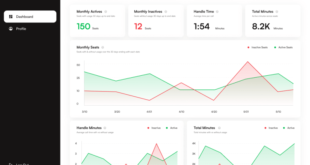As coronavirus fears hit a high point this week, companies have scrambled to institute new work from home policies. And those policies could become permanent in some cases, substantially altering our work- and life-style landscape in ways none of us would have predicted just a few weeks ago.
In at the deep end
When it comes to working from home, many companies have already made firm policy decisions one way or the other (IBM, for example, is unlikely to backtrack on its famous 2017 ban). But plenty have been sitting by the edge of the pool, wanting to explore the idea but afraid to dip their toes in the water, because:
- It’s not cheap to set up the infrastructure and training necessary for telecommuting at scale
- It’s not easy to predict how employee productivity, expenses, morale, and retention will be impacted
- It’s hard to give a major perk like that and then take it away later without inciting backlash.
Coronavirus is pushing those cautious companies in at the deep end, forcing them to invest in the necessary infrastructure and training. And over the next few weeks, these companies will have access to real-world data on how their employee productivity is impacted and what cost savings are possible with large-scale remote work. They’ll also have an easy way out for rescinding the new arrangements long term.
Bracing for severe disruption, those companies will find the water warmer and more buoyant than they expected, because the pandemic comes at a unique moment in time when working from home is already trending upward, when Internet speeds are much faster than they’ve been with redundancy on cell phones, and when collaboration tools are richer, more usable, and more sophisticated than ever before (Slack, Zoom, Skype, Teams, Hangouts, and so on).
How big will the impact be?
Here’s some math to give you a sense of how many employees could find themselves with new work-from-home benefits as the pandemic subsides:
Right now, according to Global Workplace Analytics, 56% of employees have a job where they could, in theory, work from home regularly.
Of those 56%, let’s say that half are in companies whose minds are made up one way or the other and have existing policies that they’ll never change. That leaves us with a pool of 28%.
Now, of those 28%, how many will keep their benefits long-term? We can look to the world of enterprise sales for an approximation. If you can convince a company to pilot demo your software suite for a few months, then the rule of thumb is that about 20% will become long-term customers. I’d argue that demoing work-from-home benefits is far more compelling than the latest SaaS fad, but keeping that benchmark, we’re left with around 5%.
Even if the true number is half that or a third of that, it still represents a very large shift. (Today, only 3.6% of employees work from home half or more of the time.)
How will this change the economy?
With so many new employees working from home regularly, many aspects of our economy will change. Here are some second order impacts to consider:
- Coffee shops will become more crowded with laptops. If you have a long commute to the office but don’t want to feel claustrophobic at home, they’re an easy alternative.
- More co-working spaces will spring up, because working from coffee shops isn’t ideal either. One interesting startup converts local restaurants into co-working spaces during the day.
- People will be healthier due to more sleep and eating lunch more often at home vs. the Burger King next door to the office.
- Companies will save money on office expenses, since by rotating staff they need fewer desks.
- Carbon emissions will fall due to less commuting and less travel in general.
- Companies will become more open to hiring remote workers, perhaps even in other countries, because it’s not that big of a leap to go from a remote local employee to a remote gig worker.
- Social collaboration tools will stop becoming the playground of just tech startups and will expand to the old guard companies.
Perhaps the most important impact is that we’ll be better prepared for the next pandemic. We’ll have healthier employees with stronger immune systems and greater social distances as well as employers who can shut down their offices preemptively, because having everyone work from home is just business as usual.
Adam Ghahramani is on the decision sciences team at healthcare ad agency CMI/Compas. He is a contributor to VentureBeat and an expert on blockchain technology.




